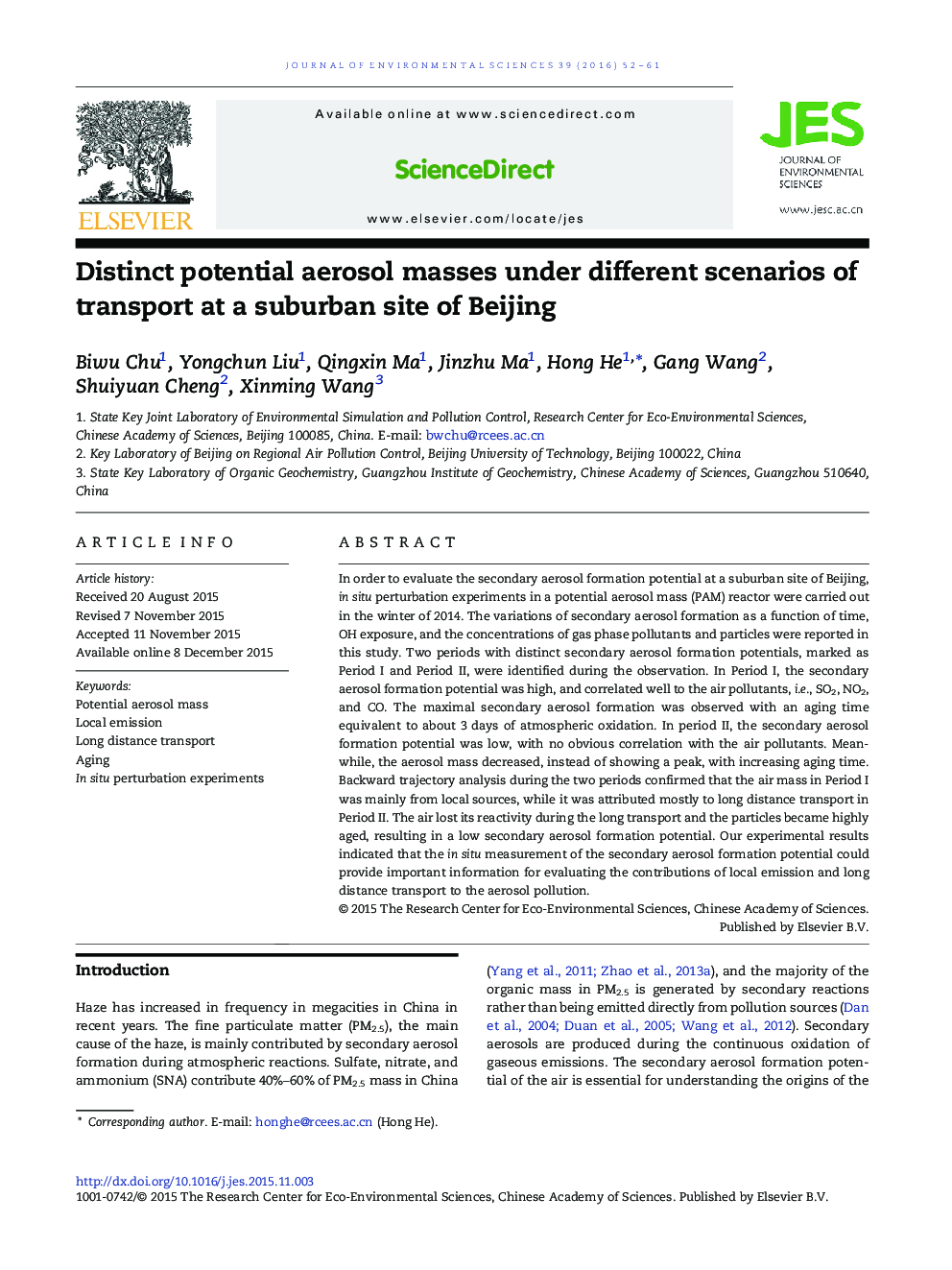| Article ID | Journal | Published Year | Pages | File Type |
|---|---|---|---|---|
| 4453869 | Journal of Environmental Sciences | 2016 | 10 Pages |
In order to evaluate the secondary aerosol formation potential at a suburban site of Beijing, in situ perturbation experiments in a potential aerosol mass (PAM) reactor were carried out in the winter of 2014. The variations of secondary aerosol formation as a function of time, OH exposure, and the concentrations of gas phase pollutants and particles were reported in this study. Two periods with distinct secondary aerosol formation potentials, marked as Period I and Period II, were identified during the observation. In Period I, the secondary aerosol formation potential was high, and correlated well to the air pollutants, i.e., SO2, NO2, and CO. The maximal secondary aerosol formation was observed with an aging time equivalent to about 3 days of atmospheric oxidation. In period II, the secondary aerosol formation potential was low, with no obvious correlation with the air pollutants. Meanwhile, the aerosol mass decreased, instead of showing a peak, with increasing aging time. Backward trajectory analysis during the two periods confirmed that the air mass in Period I was mainly from local sources, while it was attributed mostly to long distance transport in Period II. The air lost its reactivity during the long transport and the particles became highly aged, resulting in a low secondary aerosol formation potential. Our experimental results indicated that the in situ measurement of the secondary aerosol formation potential could provide important information for evaluating the contributions of local emission and long distance transport to the aerosol pollution.
Graphical abstractFigure optionsDownload full-size imageDownload as PowerPoint slide
